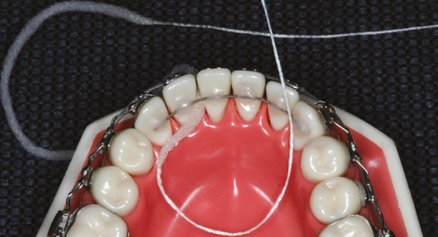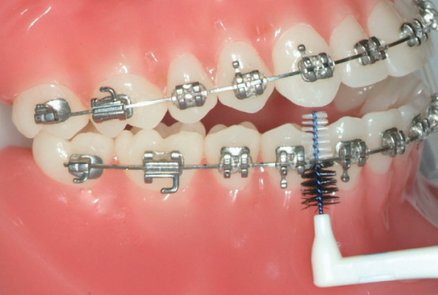Information – FAQ
Regular bite and correct jaw relationship improve chewing movements and functioning of the jaw joints, and prevent tooth wear and traumatic injuries. In contrast to crooked, crowded and overlapping teeth, the regular dentition may be cleaned more easily, and more effective oral hygiene protects from tooth decay and gum disease. Beautiful teeth and an attractive smile are important for the personality development, and they strengthen the self-confidence and help improve the quality of life.
There is generally no age limitation to orthodontic treatment. The most suitable age for starting the treatment is normally just before the puberty. However, it is never too early for a child for a specialist consultation ensuring in good time the detection of an aberrant development. It is also never too late for an adult individual to have a successful orthodontic treatment.
In the first consultation we decide together with the patient whether and when the treatment would be necessary. At the treatment start we take diagnostic records such as study models and digital radiographs and photographs, and prepare an individual treatment plan and cost estimate.
Comprehensive orthodontic correction involves placement and regular adjustments of fixed or removable appliances. Appliance placement is laborious and usually requires a longer appointment at the early stage of treatment. During the active treatment phase which may normally last about 2-2½ years our patients are asked to attend appointments at 4-6 weeks intervals.
When the treatment goals are achieved the active appliance is removed and a retention brace is worn for stabilization of the correct tooth position.
Depending on the complexity a comprehensive orthodontic treatment may generate costs of a few thousand Euros. Orthodontic treatment of children and adolescents started before the age of 18 years is often covered by public health insurances. During the treatment 20% of the costs are paid as own-contribution which is reimbursed by the insurance at the end of treatment.
Treatment of mild malocclusions is not covered by the catalogue of benefits of the public health insurances, and is normally carried out as private arrangement.
Orthodontic treatment started at the age of 18 years and later is paid for by the public health insurances only in severe cases and under particular circumstances.
Private health insurances reimburse treatment costs depending on the individual contract, and do so normally without age or case severity restrictions.
Orthodontic treatment measures do not cause pain. They might, however, lead to a transient tooth sensitivity which, if it occurs at all, typically fades away within 4-5 days. Should you however feel pain, please contact the orthodontist immediately to deal with it.
Yes, because the family dentist is specialized in preventing and treating tooth decay and gum disease, and needs to see the patient regularly to ensure that potential problems are dealt with swiftly. In addition, we coordinate our treatment measures with the family dentist and welcome these visits to inform the family dentist about the progress of the orthodontic treatment. For these reasons it is advisable during orthodontic treatment to have the usual dental check-ups every six months.
Orthodontic patients may receive various types of appliances, the removable ones to be put in and out of the mouth according to orthodontist’s instructions, and the fixed ones which are attached to the teeth for the duration of treatment.
Various removable appliances are more suitable to use the jaw growth potential for a successful correction. Fixed appliances are more appropriate for a precise three-dimensional tooth movement and positioning. Furthermore, there are various technical auxiliaries such as elastic rings, wires, springs, screws, outer and inner bows etc.
Activator, bionator, twinblock, expansion plates etc. are names for removable braces used to achieve important sub-goals of the comprehensive orthodontic treatment.
Most removable appliances must be worn both at night and during the day. During meals, sports and school classes they are removed from the mouth and kept in a brace container. It is very important to clean both the teeth and the brace thoroughly after every meal. If something goes wrong with the brace or it does not fit properly over the teeth, you should call the orthodontist for an unscheduled appointment.
A fixed brace consists of brackets which are attached to the teeth by means of special adhesive and are removed without a visible trace at the end of treatment. Special thin wires are placed into the brackets in order to move the teeth slowly and gently into the correct position.
As food and plaque may stick to the brackets and in an extreme case even lead to tooth decay and gum inflammation, good oral hygiene is imperative. Special single-tuft and interdental brushes are helpful aids used in addition to standard toothbrushes. To prevent brace damage orthodontic patients should refrain from chewing hard and sticky foods such as nuts and chewing gum, and cut food in small pieces.
At the end of treatment the so-called retention is required to stabilize the new correct tooth position. Depending on the position of the teeth before the treatment, the retention may be effected either using a removable brace or by means of a thin invisible wire fixed to the inside tooth surfaces. Depending on the severity of the treated malocclusion the retention duration may vary between several months and some years.



